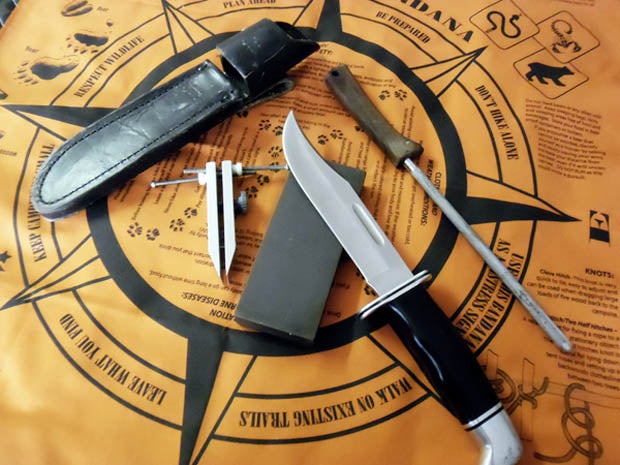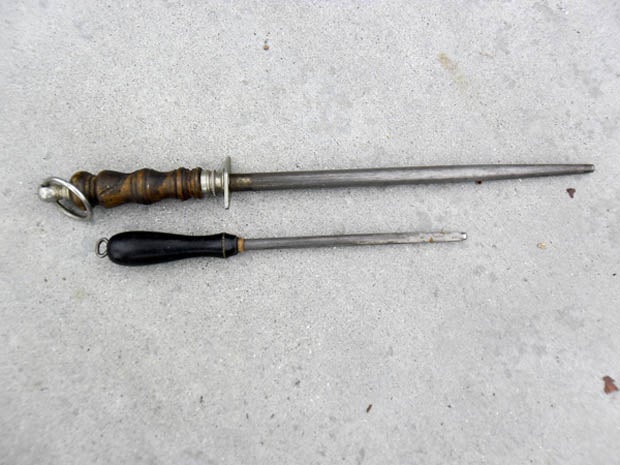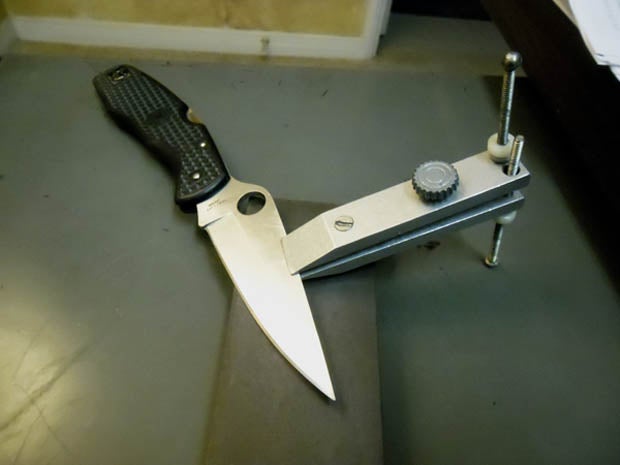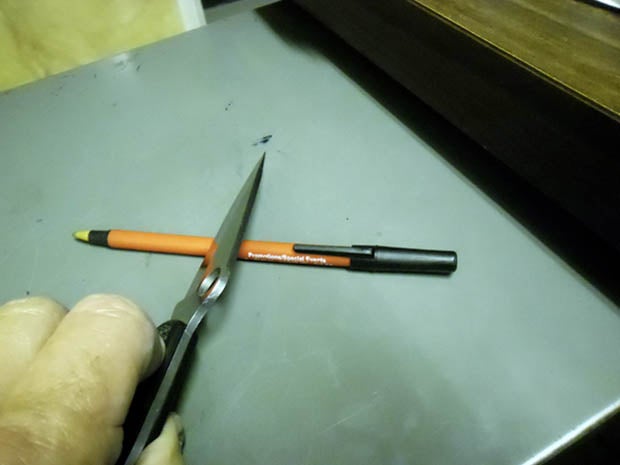Trail Tips: Maintain Your Edge With Knife Sharpening
A knife is a useful tool for off-road adventures, and trainer Tom Severin provides tips on how sharpen your knife

Outdoorsmen are quite skilled, generally speaking. But one of the less understood skills is how to sharpen knives properly. Most people have a vague idea of the process. Perhaps youíve even tried using one of those gadgets you buy at the store. Knife sharpening involves certain tools and skills. With those, you can keep your knives in good working order for years.
The cutting edge on a knife may appear smooth, but at a microscopic level it is actually a row of very tiny saw teeth. With repeated use, those saw teeth get out of alignment. (This is true for all knives, whether for hunting, whittling, or preparing food.) The result is a duller blade. The first step is to use a knife sharpening steel.

How to Sharpen a Knife
A steel (not to be confused with a file) has numerous tiny ridges running lengthwise. Swiping a knife blade along the steel produces a straight and smooth edge. That may be all you need during the life of your knife. Iíve heard of knives that are 10 years old and still work great. The owner runs them over a steel before each use, and they hold up fine.
As with grinding, which Iíll get to next, you want to hold the blade at the proper angle on the steel. For hunting knives, that amounts to about a 30-degree angle. (Blade angle plus 10 degrees.) For kitchen knives, hold the knife at about a 20 to 25 degree angle relative to the steel. Swipe about a dozen times, alternating the side of the blade each time.
If you want to understand the impact of using a steel, test your blade on a piece of folded paper before and after using a steel. Beforehand, the blade cuts in a rough and jerky fashion, and often tears the paperís edge. Afterward, the knife should cut through the paper smoothly. If the steel does not bring the edge back to a useful sharpness, you need to grind the blade. Grinding is also required if the blade has any nicks or dings in it.
Grinding is a precise process, too. Unless youíre an expert, donít use a power grinder. Those heat up the metal, causing it to lose its temper. Also, avoid using those grinders often found in kitchens. The angle may not be proper, and they tend to just chew up the blade.

Proper grinding is done by hand, and involves a knife sharpening guide (sometimes called an angle guide) and sharpening stone. The sharpening guide is important because you have to hold the angle throughout the stroke. Thatís almost impossible for most people to do by hand. The number one key to success is to use an angle guide. Without it, you wonít be able to grind at the proper angle, and your efforts will fail.
Edge Pro, Inc. makes two types. Their Apex model is sufficient for most people. (Mine is an older LoRay unit, and may no longer be available. DMT makes a very similar unit.) A quick Internet search will turn up other models to choose from.
For optimum grinding, youíll need two stones. One is a medium grade (about 180 grit), and the other is finer (320 to 360 grit Ė about twice as fine as the first stone).
Proper use of a Knife Sharpening Guide
Start with the medium grit stone. Set the angle of the knife sharpening guide to same angle as the blade. For hunting knives, that would be about 20 degrees. Each manufacturer has decided on the optimum angle. Until you have a lot of experience, it is best to maintain the same angle. A simple technique to achieve the same angle is to darken the edge with a Sharpie pen. Then adjust the angle so a very light grind removes the ink completely along the blade angle.
The preferred technique is to sweep the blade back off of the stone. If you have a lot of metal to remove use a circular motion initially, and then switch to pulling the blade off the stone to raise a burr. Do this until you see (or feel) a burr piling up along the entire underside edge. This takes time and patience. Flip the unit over and repeat the process. The second key to success is to grind on the medium stone until you raise a burr all along the opposite edge.

Now repeat this entire process using the finer stone. This will remove any scratches in the metal left by the first stone. To test the blade, rest it on a pen, as shown in the image. The blade should dig in easily. Then lower the angle of the blade. If it is sharp it will continue to bite and not slip.
Use your steel when you are done grinding to smooth and straighten the edge.
You can use a piece of paper to test for sharpness. Hold an open sheet in one hand, and try to slice the paper. If these steps donít work, try some more grinding.
For most of us, this process will result in a blade sharpness we are happy with. To go beyond, you need to continue step two with increasing finer grit stones (like 1000) and use a leather strop instead of a steel.
Knowing how to sharpen a knife is a skill everyone should master. It comes in handy in the home and out in the woods. The proper knife sharpening tools come at a price, but they last for years and allow you to get more use out of your knives.
MORE TRAIL TIP STORIES
Top 10 Must-Have Items For Your Off-Road Vehicle
Trail Tips: Self-Sufficiency, Generosity Ensure Successful 4x4 Trip
5 Reasons To Love Your 4WD Vehicle
Badlands Off-Road Adventure
Off-road trainer Tom Severin shares insight and tips on a variety of topics related to preparing you for that next off-road adventure. With over 40 years of off-road experience, Severin operates under his business Badlands Off-Road Adventures. He is a certified professional 4WD Trainer by the International 4-Wheel Drive Trainers Association and a Wilderness First Responder (WFR). He is a member of the California Association of Four Wheel Drive Clubs (CA4WDC), United Four Wheel Drive Associations and the BlueRibbon Coalition. He also is a certified UFWDA and a CA4WDC 4WD instructor.
For more information about Badlands Off-Road Adventures, visit 4x4training.com.


 Your Privacy Choices
Your Privacy Choices